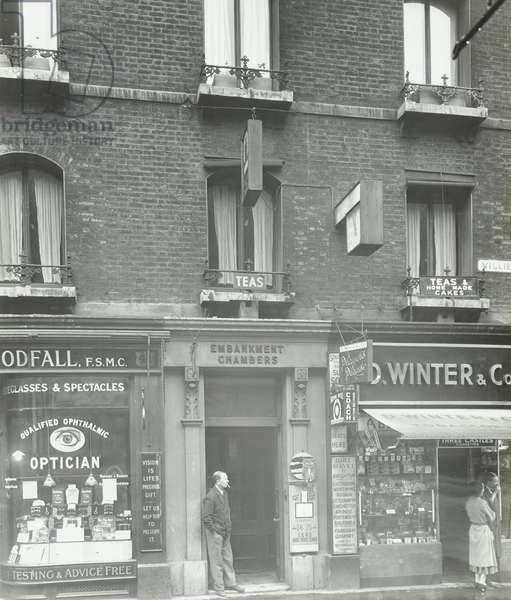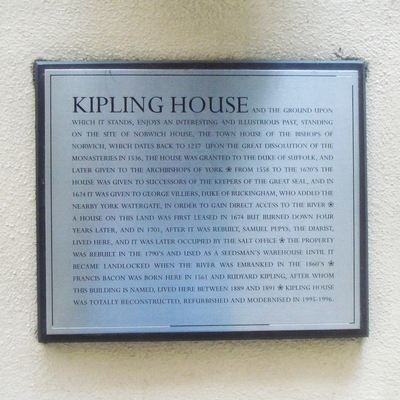This 1888 map has this building (now number 43) as number 19, and shows it having 7 and a half floors and a basement. From the Daily Mail: Kipling's apartment was on the 5th floor.
The Victorian Web has "In the autumn of 1889, Rudyard Kipling, aged twenty-four, returned to England after working seven years in India as a journalist and editor. He rented for almost three years two small rooms in Embankment Chambers, now named Kipling House, at 19 Villiers Street in Strand."
We were delighted to find an excellent report "Site and Building history of Kipling House, Villiers Street Westminster". Reading this we finally understood the plaque. Indeed we think the plaque may be a heavily abbreviated, version of the report. The following is our, rather less abbreviated, summary but if you want the full story, clearly-told, go to the report.
York House was demolished some time after 1672 so the area could be redeveloped. The land now occupied by Kipling House was first leased in 1674 and the first building was part of the large house behind, 14 Buckingham Street.
That mega-building burnt down in 1684 and was rebuilt in 1687-88. Samuel Pepys lived here and later it was occupied by the Salt Office who moved out in 1788. It was then demolished and in 1792 it was replaced by two new buildings: 14 Buckingham Street, which was let out in chambers, and 19 Villiers Street, a seed warehouse owned by Minier, Minier & Fair, a firm of seedsmen with a shop at 63, the Strand.
Minier's made some improvements to the building (19 Villiers Street) and stayed until 1880. The firm's departure was probably prompted by the loss of river access caused by Bazalgette's Thames embankment of 1864-70. In 1880 the upper floors were converted to a rooming house with up to 50 rooms, while the ground floor was turned over to shops and the whole of the building was renamed "Embankment Chambers".
The building's longest tenant, the wine bar at the southern corner, was first established here in the 1890s. Now Gordon's Wine Bar, it occupies vaults which may well date to the late 17th century.
The area deteriorated early in the 20th century. c.1925 the building was developed into offices; the present street numbers were assigned in 1926; and in 1950 the building was renamed 'Kipling House', probably signifying an upgrade. Possibly that's when the brick elevations were buried under stucco pseudo-stone.
The 1938 photo from Bridgeman Images shows the building, still named 'Embankment Chambers'.










Comments are provided by Facebook, please ensure you are signed in here to see them